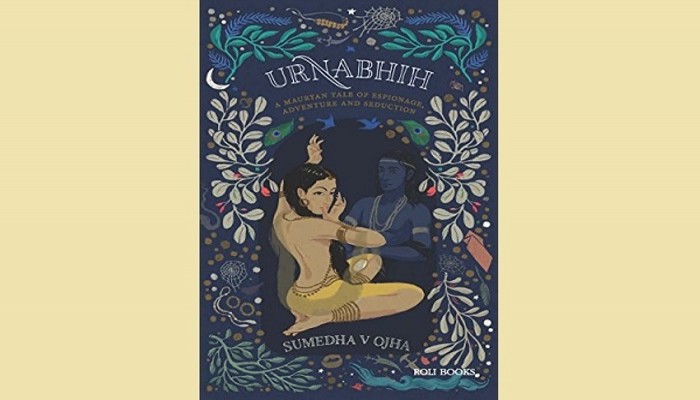Urnabhih has roots growing in the ancient life of India. From the political to the sensory
- In Book Reviews
- 08:27 PM, May 06, 2017
- Akanksha Damini Joshi
A story of a world that existed some 2300 years ago. Its own right, its own wrong. Its own good, own bad. Its own codes. How to live. How to die. Different, from our times. But its people? Similar. Greed, desire, fear, passion. And yes, the same longing: for beauty.
Urnabhih is story of that world, those people, crafted by a woman living in our times. Sumedha Verma Ojha, her seven years of intense, focused exploration. A world she reconstructed, piece by piece. First, in her own being. And now, in the collective imagination.
Let there be no doubt, the book is a powerful play of the times. It comes from the experience of a contemporary Indian woman on the ancients of this land. Not as a victim of history. But as an inheritor. Of a wise, sharp, powerful tradition.
Sumedha pours this confidence into the web of stories she spins. She is one for who India’s powerful history has come alive, and how! She plays history with the ease of a master warrior. Knowing exactly who to save, who to kill, why and how.
The story of Urnabhih is a part of her strategy, but not the only thing. Take the presentation style for example. The text is full of word-descriptions in Sanskrit. But, there is no italicization of the words. They fall straight on the eyes, just like the English words. Their meaning is given in English, just once. Like, ‘Alankarbhoomi’ means a storehouse for toiletries. There is no repetition of this in any of the following pages. The reader is expected to remember what an Alankarbhoomi is. In the remembrance, the victory.
And then, there are some Sanskrit words for which no meaning is given. Like, ‘Tambulagoshthi’. A conjecture, based on the situational description is expected out of the reader. Same with the usage of culturally indic phrases ‘like suhaga which enhances the gold’, ‘length of a muslin cloth running through a finger ring’. Gently hidden in the text is a strong demand, a clear expectation from the reader.
No, Sumedha Verma Ojha is not just a novelist content with telling a racy, pacy story to a passive reader. No. In a sense, Sumedha is like her protagonist Misrakesi. Using the masquerade of the novel to engage, to educate, to create: a new reader, and yes, a new reading.
She does not dish it all out, serve you the story on a platter. You as the reader is invited to dive in. She wants you to meet her half way, to walk the path, with her.
Urnabhih is undoubtedly crafted with deep passion. Every piece of this book has roots growing in the ancient life of India. From the political to the sensory. The intricate detailing of this story is astounding. The clothes people wore. The lotions they used. The aesthetics. The types of wines. The trees. The look of the town. And, of course, the conversation styles. Narrators of life from that time - Bhasa, Kalidasa, Vishakhadatta - they inform the style and the flow of the story. So does the insightful Kathasaritsagar.
They say, no tree grows big without growing deep its roots. Understanding, processing, digesting. The multiple stories of India. Told, not by people who came from a different culture with different codes. But by people of this land. To me Sumedha's journey reflects a reclaiming of that right. The power to tell your own story. A huge responsibility.







Comments